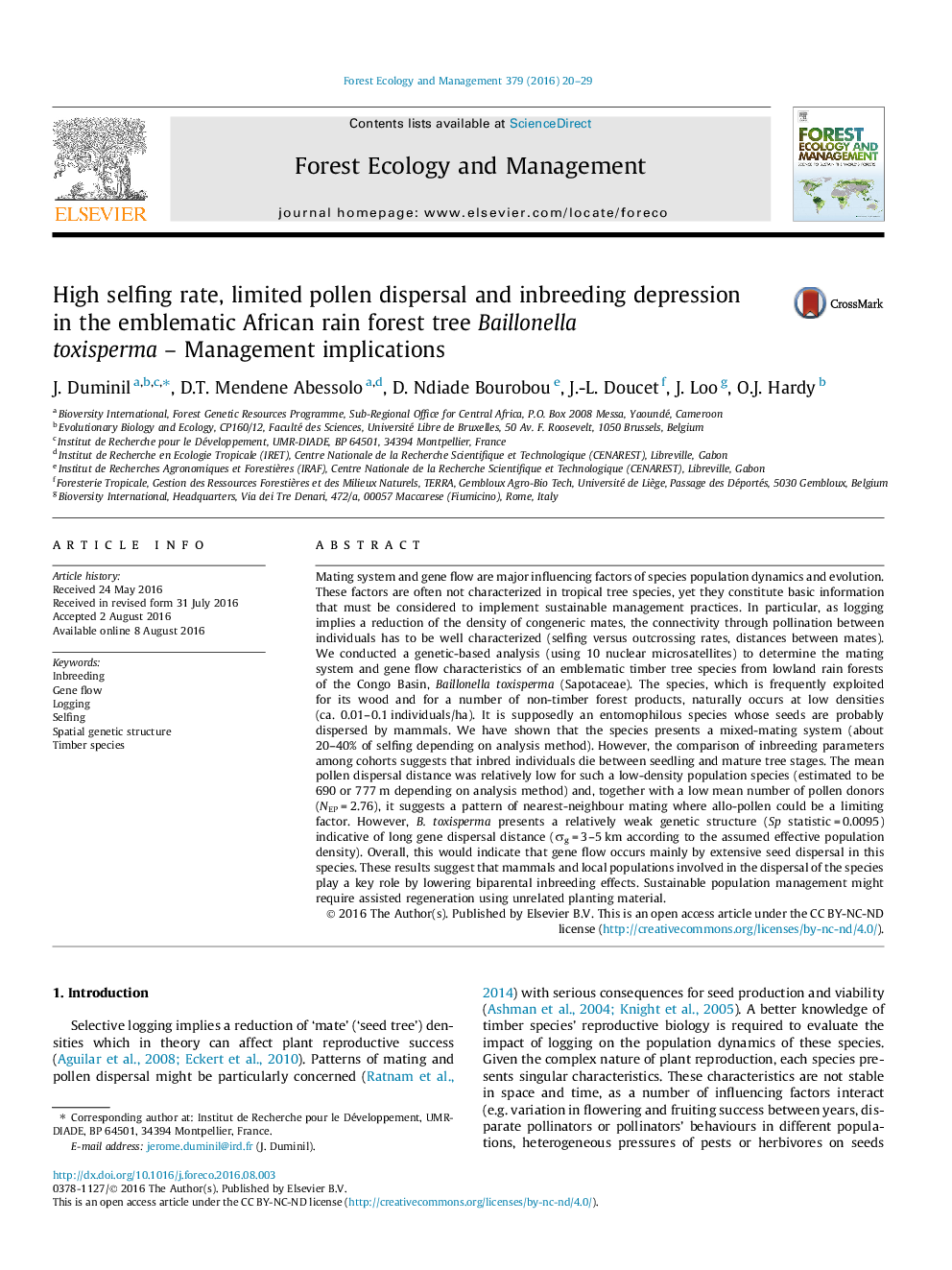| Article ID | Journal | Published Year | Pages | File Type |
|---|---|---|---|---|
| 6459614 | Forest Ecology and Management | 2016 | 10 Pages |
â¢This low-density species (0.01-0.1 ind/ha) presents unusual patterns of reproduction.â¢The species presents a high rate of selfing (20-40%) that results in unfit progeny.â¢The species exhibits extensive seed dispersal and limited pollen dispersal.â¢Species' regeneration dynamic probably depends largely on seed dispersal.â¢Assisted regeneration strategies are needed in absence of seed dispersers.
Mating system and gene flow are major influencing factors of species population dynamics and evolution. These factors are often not characterized in tropical tree species, yet they constitute basic information that must be considered to implement sustainable management practices. In particular, as logging implies a reduction of the density of congeneric mates, the connectivity through pollination between individuals has to be well characterized (selfing versus outcrossing rates, distances between mates). We conducted a genetic-based analysis (using 10 nuclear microsatellites) to determine the mating system and gene flow characteristics of an emblematic timber tree species from lowland rain forests of the Congo Basin, Baillonella toxisperma (Sapotaceae). The species, which is frequently exploited for its wood and for a number of non-timber forest products, naturally occurs at low densities (ca. 0.01-0.1 individuals/ha). It is supposedly an entomophilous species whose seeds are probably dispersed by mammals. We have shown that the species presents a mixed-mating system (about 20-40% of selfing depending on analysis method). However, the comparison of inbreeding parameters among cohorts suggests that inbred individuals die between seedling and mature tree stages. The mean pollen dispersal distance was relatively low for such a low-density population species (estimated to be 690 or 777 m depending on analysis method) and, together with a low mean number of pollen donors (NEP = 2.76), it suggests a pattern of nearest-neighbour mating where allo-pollen could be a limiting factor. However, B. toxisperma presents a relatively weak genetic structure (Sp statistic = 0.0095) indicative of long gene dispersal distance (Ïg = 3-5 km according to the assumed effective population density). Overall, this would indicate that gene flow occurs mainly by extensive seed dispersal in this species. These results suggest that mammals and local populations involved in the dispersal of the species play a key role by lowering biparental inbreeding effects. Sustainable population management might require assisted regeneration using unrelated planting material.
